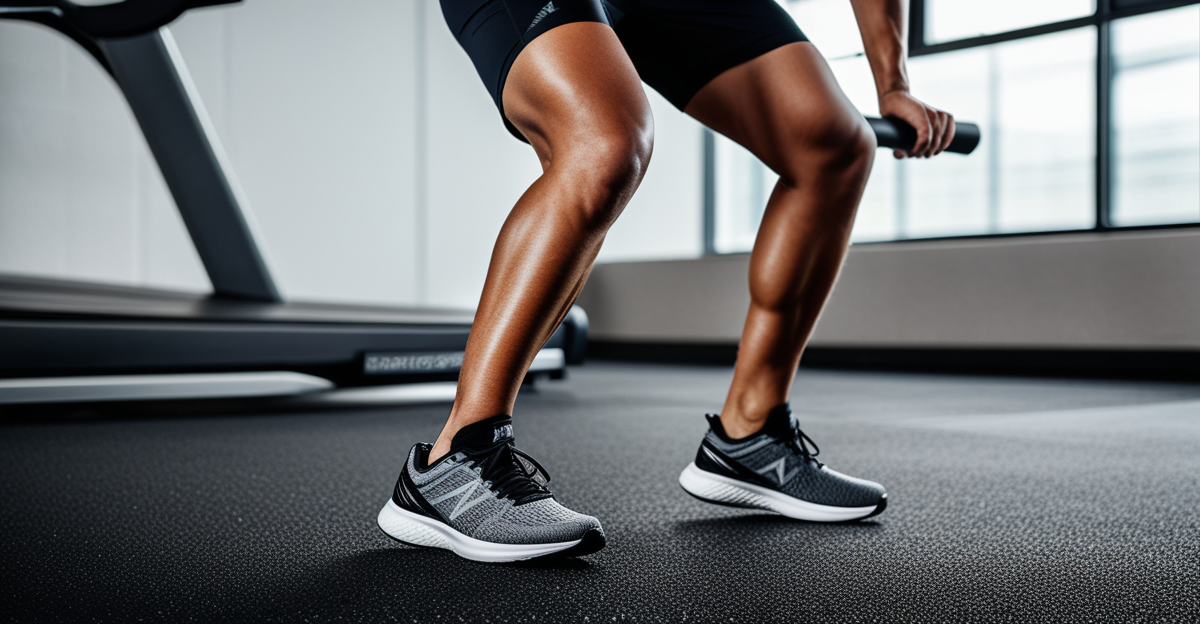Safe and Effective Cardio Workouts for Knee Pain Relief
Choosing gentle cardio workouts is essential for those seeking knee pain relief without aggravating their joints. Low-impact exercises reduce stress on the knees while maintaining cardiovascular fitness. Unlike high-impact activities, these workouts encourage movement without harsh jarring forces, protecting sensitive knee structures.
The key benefits of low-impact exercises include improved blood flow to knee joints, decreased inflammation, and strengthening of surrounding muscles that support joint stability. These effects contribute to enhanced mobility and reduced pain during daily activities.
Also read : Discover happiness: revealing the unexpected mental health benefits of gratitude practice
However, common mistakes can hinder recovery and cause setbacks. Overdoing intensity or ignoring pain signals often worsens knee discomfort. Skipping warm-ups or using improper form also raises injury risks. To avoid these issues, start slowly, prioritize technique, and listen to your body. Always incorporate rest days to allow knee tissues to recover fully.
By focusing on exercise safety and selecting appropriate low-impact routines, individuals with knee pain can enjoy effective cardio workouts that promote healing while protecting joint health.
Also to see : Mastering anxiety management: your path to peaceful living
Safe and Effective Cardio Workouts for Knee Pain Relief
When managing knee pain, selecting the right cardio workouts is crucial for relief and long-term joint health. Gentle cardio workouts emphasize low-impact exercises that reduce strain while promoting circulation and muscle strength around the knee. Unlike high-impact activities, these exercises minimize shocks that could worsen pain.
The key benefits of low-impact cardio routines include improved joint mobility and reduced inflammation. Regular sessions help maintain healthy cartilage and support muscles, easing daily movement. For example, activities like swimming or cycling distribute body weight evenly, decreasing pressure on sensitive joints.
However, some common mistakes can impede progress or cause injury. Avoid sudden high-intensity workouts or skipping warm-ups, as these increase injury risk. Proper form is essential; careless movements can exacerbate pain rather than relieve it. It’s also vital not to push through sharp pain—a clear signal to modify or stop an exercise.
By integrating gentle cardio workouts thoughtfully, individuals can enjoy safer, more effective knee pain relief while building resilience in their joints.
Top Gentle Cardio Exercises to Minimise Knee Stress
Choosing the best cardio for knee pain means focusing on low-impact activities that protect sensitive joints while boosting cardiovascular health. Swimming is an ideal option because it supports body weight, eliminating pressure on knees. It also enhances muscle strength and joint flexibility. Cycling, whether on a stationary bike or outdoors, offers controlled knee movement with minimal impact. Adjust seat height properly to avoid strain and maintain a smooth pedal stroke to reduce discomfort.
Walking, when done on even surfaces with supportive shoes, remains an accessible and effective gentle cardio workout. Modifying speed and stride length can help minimise knee stress. Meanwhile, an elliptical trainer mimics natural walking or running motions without harsh impact. It provides a fluid range of motion that supports joint stability.
To maximise joint safety during these exercises:
- Warm up with gentle stretches targeting the legs.
- Start at low intensity, gradually increasing duration and effort.
- Listen to your body and avoid pushing through sharp pain.
Proper execution and thoughtful modifications prevent further knee discomfort, making these low-impact exercises sustainable and beneficial for those seeking knee pain relief.
Top Gentle Cardio Exercises to Minimise Knee Stress
When choosing the best cardio for knee pain, options like swimming, cycling, walking, and using an elliptical trainer stand out for minimizing joint strain. These activities qualify as low-impact exercises because they reduce pressure on sensitive knees while still boosting cardiovascular health.
Swimming is excellent because water supports body weight, allowing fluid movement without shock to the knees. Cycling strengthens muscles around the knee with controlled motion, but ensure seat height suits your leg length to avoid overstressing joints. Walking, when done on flat, even surfaces with proper footwear, offers low-impact benefits; avoid hills to limit knee load. The elliptical trainer mimics natural leg movement with smooth, gliding steps, reducing impact forces compared to running.
To protect knees during these workouts, modify intensity and duration based on current pain levels and fitness. Gentle pacing and shorter sessions initially help prevent flare-ups. Pay attention to body signals and stop or adjust if discomfort arises. Proper technique is crucial—maintain posture and avoid locking knees during movement to safeguard joint health. These tailored gentle cardio workouts support knee pain relief effectively without risking further injury.
Expert Safety Tips and Precautions
When engaging in gentle cardio workouts for knee pain relief, exercise safety tips are crucial to avoid injury and promote healing. Begin with a thorough warm-up to increase blood flow and loosen muscles around the knee. Gentle stretching helps improve flexibility and prepares joints for movement, reducing strain during exercise.
Gradual progression is key—start with low intensity and short durations. Increasing workout intensity too quickly can cause setbacks and delay recovery. Experts advise listening closely to your body. Sharp or persistent knee pain signals the need to pause or modify activity. Ignoring these signs risks worsening injuries.
Modifications for knee pain include reducing range of motion, lowering resistance on cycling equipment, or opting for shorter sessions. These adjustments allow a range of fitness levels to benefit safely from low-impact exercises. For example, lowering the elliptical’s incline or cycling at a slower pace decreases joint stress while maintaining cardiovascular benefits.
Consulting a healthcare professional before starting or escalating a cardio routine helps ensure exercises are appropriate. Early professional input guides safe adaptations and helps identify underlying knee issues, supporting long-term joint health and effective pain management.
Safe and Effective Cardio Workouts for Knee Pain Relief
When seeking knee pain relief, selecting gentle cardio workouts that prioritise low-impact exercises is essential. These workouts minimize joint stress while improving cardiovascular fitness and muscle support around the knees. By avoiding high-impact movements, they prevent aggravating sensitive tissues and reduce inflammation.
The primary benefits of low-impact cardio routines include enhanced joint mobility, increased blood flow, and strengthening of muscles that stabilise the knee. This combination decreases pain during daily activities and supports long-term joint health. For example, tasks like walking on flat surfaces with proper footwear or cycling with correct seat adjustments exemplify effective low-impact exercises.
Common mistakes when exercising with knee pain involve pushing through sharp discomfort, sudden increases in intensity, and neglecting warm-ups or proper form. Ignoring pain signals can lead to worsening symptoms or injury. Instead, it is crucial to start workouts gradually, listen to your body, and maintain correct technique. Incorporating rest days also aids tissue recovery and prevents setbacks.
Following these principles ensures that gentle cardio workouts remain safe and effective, promoting knee pain relief without compromising joint integrity.
Safe and Effective Cardio Workouts for Knee Pain Relief
Selecting gentle cardio workouts is essential for those seeking knee pain relief without worsening symptoms. These workouts focus on low-impact exercises that minimize stress on the joint while still enhancing cardiovascular fitness. Unlike high-impact activities, gentle cardio workouts protect delicate knee structures by avoiding jarring motions.
The primary benefits of low-impact cardio routines include increased blood circulation around the knee, reduced inflammation, and strengthened muscles supporting joint stability. These effects directly improve mobility and lessen discomfort during everyday movements.
However, some common mistakes can hinder progress or exacerbate pain. Overexerting oneself by increasing intensity too quickly or ignoring pain signals risks aggravating injury. Another typical error is neglecting warm-ups and stretching, which can compromise joint flexibility and increase strain. Poor technique also contributes to knee discomfort and potential injury.
To ensure safe and effective cardio for knee pain relief, it is vital to start slowly, prioritize proper form, and listen attentively to your body’s feedback. Incorporating rest days and adjusting workout intensity based on your pain levels promote healing and sustainable joint health.











